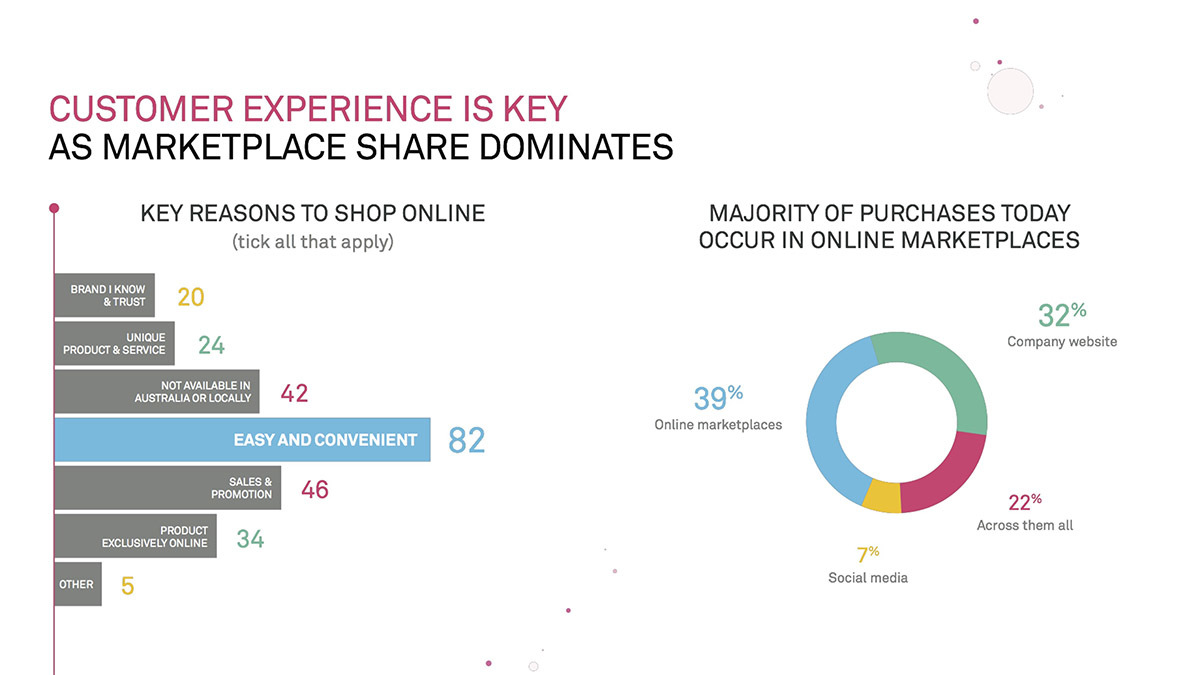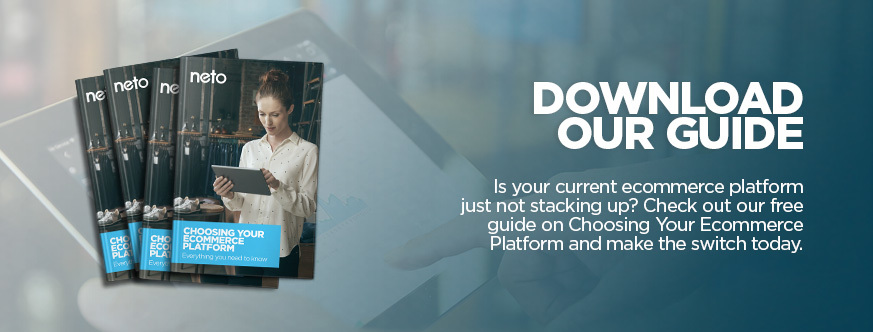
Ecommerce and Retail

In our recent market investigation with Telstra, we took the opportunity to ask 1001 active online shoppers what mattered most to them. They were a reasonably diverse group—predominantly from cities along the eastern coast of mainland Australia, but equally split between genders, age groups, and frequency of online purchasing.
One of the first things we noticed was that consumers are making more purchases in online marketplaces than on company websites or social media. We found 61% of customers shopped in online marketplaces, either exclusively (39%) or in addition to other online shopping sites (22%).
If you turn these numbers around, you might be shocked to realise that retailers who only sell through their own online stores are failing to connect with at least 46% of active online shoppers. And while reasons like exclusive online access and geographic availability were popular reasons for shopping online, they were only around half as popular as customers’ primary motivation: because it’s “easy and convenient” (82%).

All of this new information led us to ask a very important question:
As an online retailer, what are you doing to ensure online shopping is easy and convenient for your customers?
We know that customers wouldn’t be customers if they didn’t want to buy something. But modern shoppers have an enormous range of options, they want to make educated decisions about their purchases, and that requires information. Have you made that product information readily accessible to your online customers, by featuring it in your listings or providing prominent links? You might even find this reduces the number of enquiries your customer service team has to handle, by helping customers to help themselves.
Once they’ve decided to buy, customers want to know where the stock is available. Half of the surveyed customers thought retailers should be able to check stock availability across locations and channels, including the stock you’ve made available on marketplaces and social media, while they’re still in-store. We were surprised by that—we thought more customers would expect this service. So we asked for more information and discovered that not all online shoppers knew such a feature existed. Once they did, 75% thought it indicated a superior service offering by the retailer. This sort of information is only really available through inventory management software that built into your ecommerce platform either directly or through integrations.
With Amazon launching in Australia this September, one in three customers are already saying they intend to switch from their current purchasing site. That’s a significant portion of the market that will only be accessible by those retailers who seize the opportunity to open up an Amazon store, and especially those selling electronics, gifts, and apparel—the three preferred retail categories for those who intend to switch.
Are your shipping policies and conditions of return customer-friendly? This is one of the most commonly mentioned pain-points for customers, so it should come as no surprise that
For those retailers without a bricks-and-mortar store, it might be time to ask whether it’s worth setting up a service desk at the warehouse, to handle such queries.
Customers want a lot from their online retailers, so in order to be successful, you’ll need an ecommerce platform that gives you

The good news is that a full-featured ecommerce platform like Neto gives you all these things and more, making life easier for both you and your customers. Neto is the first all-in-one ecommerce platform with built in inventory and the only one that seamlessly syncs stock & orders between your retail, online and eBay stores. Cloud-based and designed for growing retailers, we enable anyone to sell anything, anywhere—from web, mobile, eBay and social media, through to bricks-and-mortar stores. If you want to see for yourself how Neto takes care of the details and lets you concentrate on your core business, start your free trial today.